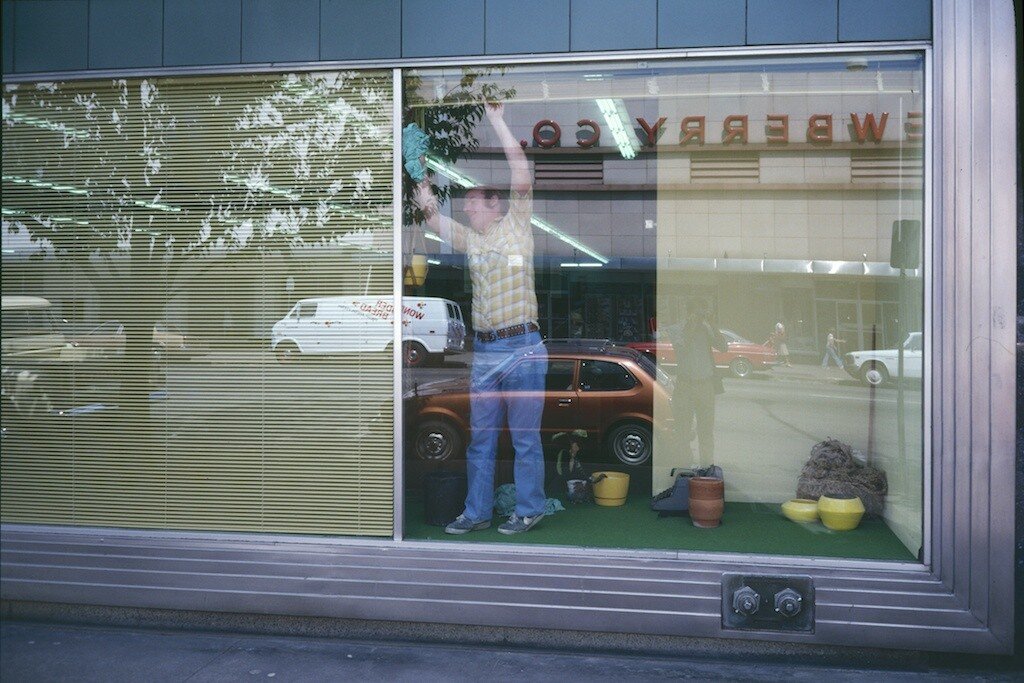1983 | The Berm at Bombay Beach, Salton Sea
The Salton Sea, even in recent history, has been rising and falling dramatically over long precipitation cycles. At one point, here was the largest lake in North America, but only in area, since the basin is wide and shallow. Modest changes in rainfall generate huge changes in the sea’s footprint; it’s in a broad tidal plain without a shoreline. It was originally formed when the Colorado River, laden with silt from the entire Southwest, plugged its own channel and the flow pooled in what came to be called Lake Cahuilla.
This evaporated entirely centuries ago, but in 1905, unmanaged human intervention again diverted the river’s flow, and the present Salton Sea was formed in just two years, in spite of efforts to realign the Colorado. As this frantic activity progressed, the river was rapidly carving a waterfall upstream, which grew to some 80 feet high before the flow was rerouted into a working channel.
By the 1950’s, the Salton Sea had become an inland salt-water resort, sporting developments including a yacht club designed by Albert Frey, but agricultural irrigation drainage flushed salts and pesticides into the sea’s collected volume. With its surface some 235 feet below the ocean, water had no place to go but up, and evaporation left salts, concentrated hostile chemistry, and the sadly rotting carcasses of fish and birds.
When I visited again in 1983, I checked on this enormous berm which the Corps of Engineers had built to save part of the tiny town of Bombay Beach from the rising sea level. I had to drive my car up the slope to the launching ramp to photograph fishermen prepping their boats.









